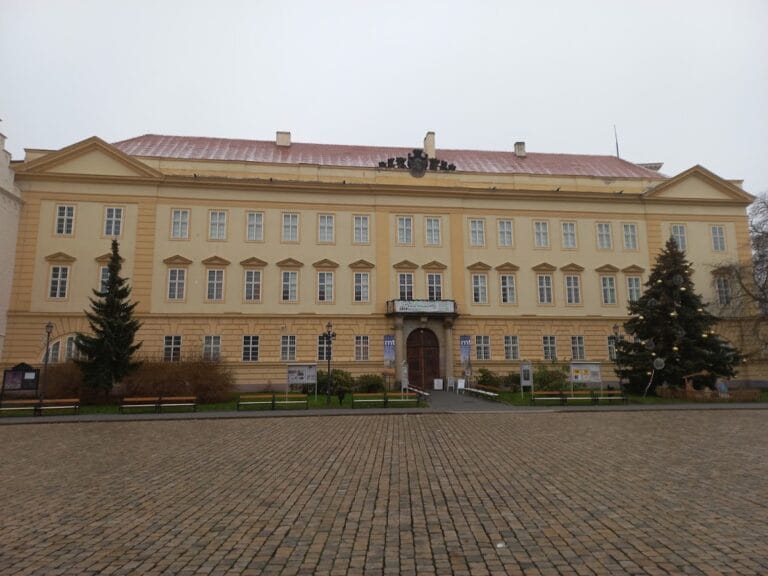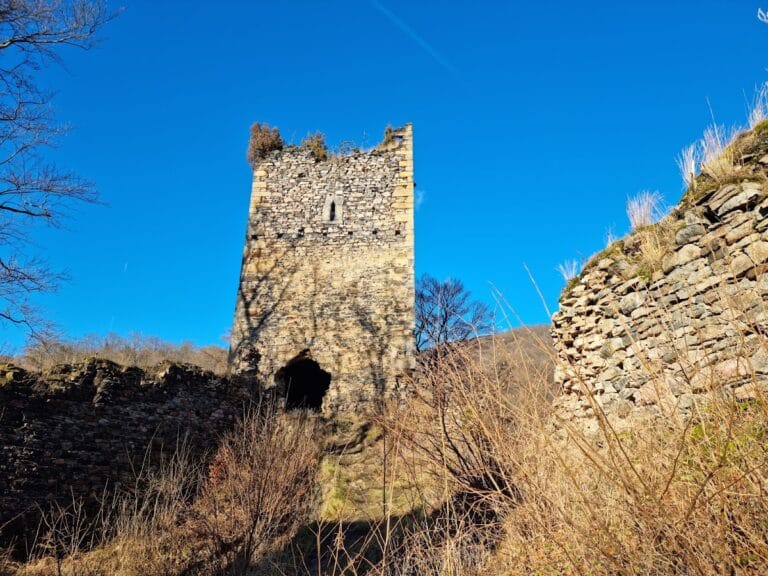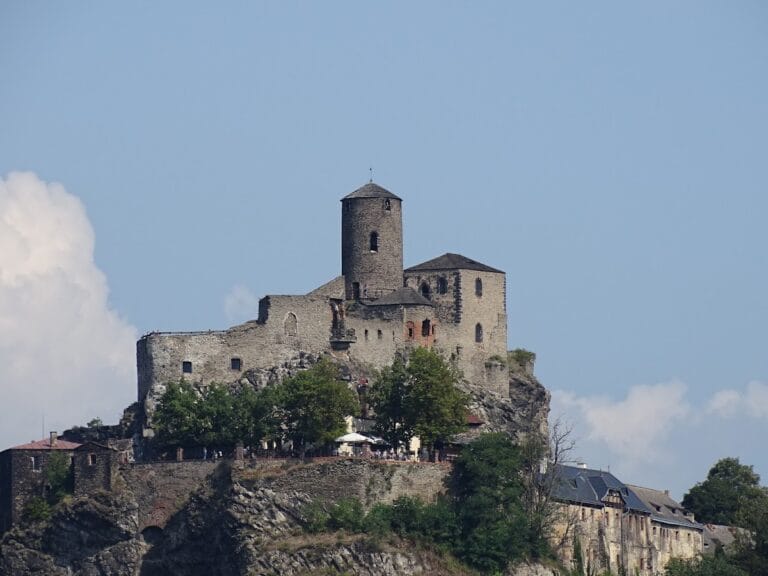Krupka Castle: A Medieval Fortress in the Czech Republic
Visitor Information
Google Rating: 4.5
Popularity: Medium
Google Maps: View on Google Maps
Official Website: www.hrad-krupka.cz
Country: Czechia
Civilization: Medieval European
Remains: Military
History
Krupka Castle stands above the town of Krupka in the Czech Republic, built by the medieval Bohemian kingdom. It likely dates back to the early 14th century, with King Wenceslaus II probably overseeing its construction to strengthen royal authority in the region. The castle first appears in written records in 1330 when King John of Luxembourg granted it to a noble named Těma of Koldice, marking the beginning of a long association with the Koldice family.
Throughout the 14th and 15th centuries, Krupka Castle remained mainly under the Koldice family’s control, though intermittent changes in ownership occurred. The fortress played a significant role during the Hussite Wars, a series of religious conflicts that swept Bohemia in the early 15th century. It was subjected to several sieges and military actions, including involvement in the nearby 1426 battle around Ústí. In 1433, the castle was seized by Jakoubek of Vřesovice, and from 1436 to 1437, it served as the site for peace negotiations, reflecting its strategic and political importance during this turbulent era.
After the Koldice family’s tenure ended in 1504, the castle passed through various hands, including Arnošt of Šumburk and members of the Kolowrat family. In the mid-16th century, ownership shifted to Václav of Vartenberk, who participated in an uprising against the ruling Habsburg monarch, King Ferdinand I, during 1546–1547. As a consequence of his rebellion, the castle was confiscated and became royal property. In 1551, it was pledged to Volf of Vřesovice and subsequently managed by royal stewards until 1615 when Adam of Šternberk acquired it.
By 1621, the castle had been abandoned as a noble residence, likely due to the pressure of ongoing conflicts such as the Thirty Years’ War. During this period, various armies may have made use of the ruins. Towards the end of the 17th century, the Šternberk family constructed a new building known as Horský zámek within the castle’s remaining walls. This late-17th-century structure was built using stones recovered from the older parts of the castle and served a more administrative or residential purpose. After suffering repeated damage from warfare and neglect, parts of the castle were rebuilt in the early 1700s; however, large sections remained in ruin.
Krupka Castle experienced several cycles of destruction and rebuilding. It was destroyed during the Hussite Wars in 1429 but was reconstructed between 1434 and 1440. A substantial late Gothic renovation took place between 1471 and 1482, enhancing its fortifications. The Thirty Years’ War inflicted further damage, after which the castle gradually fell into disuse. Despite partial restoration efforts in the 18th century, the fortress largely became a ruin in the following centuries.
Remains
The ruins of Krupka Castle reveal a roughly rectangular layout typical of royal fortifications from the Gothic period. The earliest castle featured perimeter buildings surrounding a central courtyard, with its main tower, or donjon, situated on the northern side. This donjon had a flat ceiling and was accompanied on its western side by a long palace, though only parts of this building remain today.
Later, during the late Gothic reconstruction of the 15th century, the castle was significantly expanded and reinforced. A parkán, or outer defensive wall, was added to increase protection. Important gateways, including the first and second gates leading into the castle, were fortified with large semicircular bastions designed to repel attackers effectively.
A particularly notable feature is the southern shield wall, measuring approximately 6.5 meters thick. This massive defensive barrier included a central artillery chamber intended for early cannon use. On the western side of this wall stood a semicircular bastion, reinforcing the castle’s southern defenses. Above the shield wall was a large round tower that lacks interior rooms in the preserved section, likely functioning as a platform for mounting guns to control the road leading into Krupka.
Unlike many medieval castles, Krupka lacks a main tower known as a bergfried, a fact remarked upon by the researcher Otto Piper around 1900. Scattered large blocks of cubic rubble masonry near the ruins appear to have been blasted apart during the Thirty Years’ War, providing insight into the construction techniques and mortar quality used in the original fortress.
Other remnants include a tower-like structure on the eastern side, which has been adapted to serve as a lookout point. Visitors can also observe the entrances through the first and second gates, accessible via a surviving path that once led into the castle complex.
Within the ruins, the Horský zámek was erected in the late 17th century by the Šternberk family. This building reused stones from the older castle fabric and now stands as a distinct component of the site, historically serving various functions linked to administration and later hospitality.
A viewing platform on the southern edge of the castle grounds offers a commanding perspective over the town below, including its historic churches. This area also features a monument commemorating the visits of the poet Goethe in the early 19th century, linking the site to cultural history beyond its medieval military significance.







